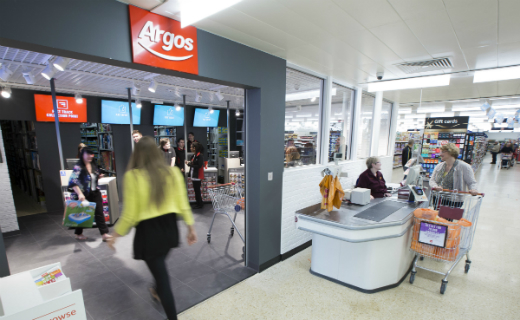Sainsbury’s ambitious plans to purchase retail giant Argos, which was only just finalised, has been at the forefront business pages for the past four months.
While this particular deal, cited at a cost of £1.4 billion, is now final, this is only just the beginning of mergers in retail, which are expected to come thick and fast over the next few years on both sides of the Atlantic.
While these sorts of takeovers may be monumental for both sides of the deal, and business strategies are often meticulously crafted to squeeze the most capital from these billion pound investments, the technological sides of the equations can sometimes be overlooked.
Merger headaches
Retail technology is synonymous with complex technology ecosystems which have been built up over many years. These are invariably linked by a multitude of connectivity approaches leading to multiple issues when attempting to facilitate new types of customer journeys that span the ecosystem.
For many enterprises, this ‘spaghetti integration’ has grown immensely since they first began digitising their respective operations, with many bolting on new core systems from various suppliers, in some cases 20 to 30, running different technologies.
>See also: Customers will be the worst affected by the Dell-EMC merger – Gartner
The constraints of this structure lead to issues around visibility, consistency and communication. In turn, this can lead to errors and inefficiencies across the business – eroding margin – as well as delays implementing new technological initiatives.
Add in modern trends of cloud, social and big data, and this becomes a headache. Indeed, as systems grow increasingly tangled, they are becoming steadily constraining, making the execution of anything remotely clever particularly difficult, and the sheer number of different systems that must be touched to do a single transaction where someone buys online and picks up in-store can be intimidating.
When two companies facing similar IT challenges merge, the result can seem overwhelmingly chaotic, putting more strain on an already stressful process that is filled with challenges in terms of people, process, headquarters relocations and other vital decisions.
Combining two businesses and two sets of ‘spaghetti’ offers a unique challenge requiring a new way of thinking. This new thinking needs to ensure that technology enables, rather than constrains, the benefit from merger synergies whilst attempting to digitise the business.
Cutting up spaghetti integration
For companies seeking to cut back the ‘spaghetti’, there are multiple options available today that can help them achieve lower costs, more agility and better system and process integration.
These options can be summarised in three main strategies: complete front-to-back replacement of their core systems with off-the-shelf application software, rewriting these systems in more modern technologies, or wrapping and extending the existing systems.
The right solution will vary from company to company, and the choice should be made based on several factors, such as the size of the businesses, the number of legacy systems they have in operation, and the funds available.
A middleware-based approach offers many advantages to retailers today: it’s less risky, more cost- and time-effective than a complete overhaul of the core system, and facilitates future replacement of back-office applications with standardised ones.
By utilising a middleware approach, retailers can drastically reduce the clutter in their IT systems, leading to immense cost-improvements but also benefitting from being able to innovate quickly.
The reality is that existing application software does not have in-built capability to support the latest innovations – nor will it ever while the speed of change continues at the current rate.
This approach also allows complete visibility and process alignment across the merged businesses. This visibility is not only limited to products inventory and stores, but to common customers as well. Achieving a better understanding of customers, through creating a robust single-view, can create interesting possibilities for retailers.
>See also: A tale of two companies: why mergers can double cloud security challenges, and what to do about it
For instance, a food retailer merging with an appliance retailer, a customer who is identified as a frequent purchaser of wine at the food retailer could be targeted with advertisements for a wine cooler sold by the appliance retail counterpart.
Alternatively, a customer who has recently purchased a wine cooler could be sent a special offer for wine, assuming they are planning to fill their newly purchased appliance. While this is a simplistic example, creative and effective uses of this increased visibility will emerge as mergers continue to take place in the retail space.
The middleware approach
This middleware approach presents its own benefits to customers as well, for example by guaranteeing product deliveries aren’t unnecessarily delayed, allowing them to order from both retailers at the same time – in the case of merged supply chains – and by allowing pricing to remain low thanks to highly efficient processes that greatly reduce IT expenses.
In almost every case, retailers will face the huge challenge of integrating a vastly complex web of multiple versions of systems supplied by many different vendors. If they don’t sort out this tangle, it will take years to achieve the benefits in efficiency, synergy and growth they were aiming for in the first place.
Sourced from Oliver Guy, global retail director, Software AG










